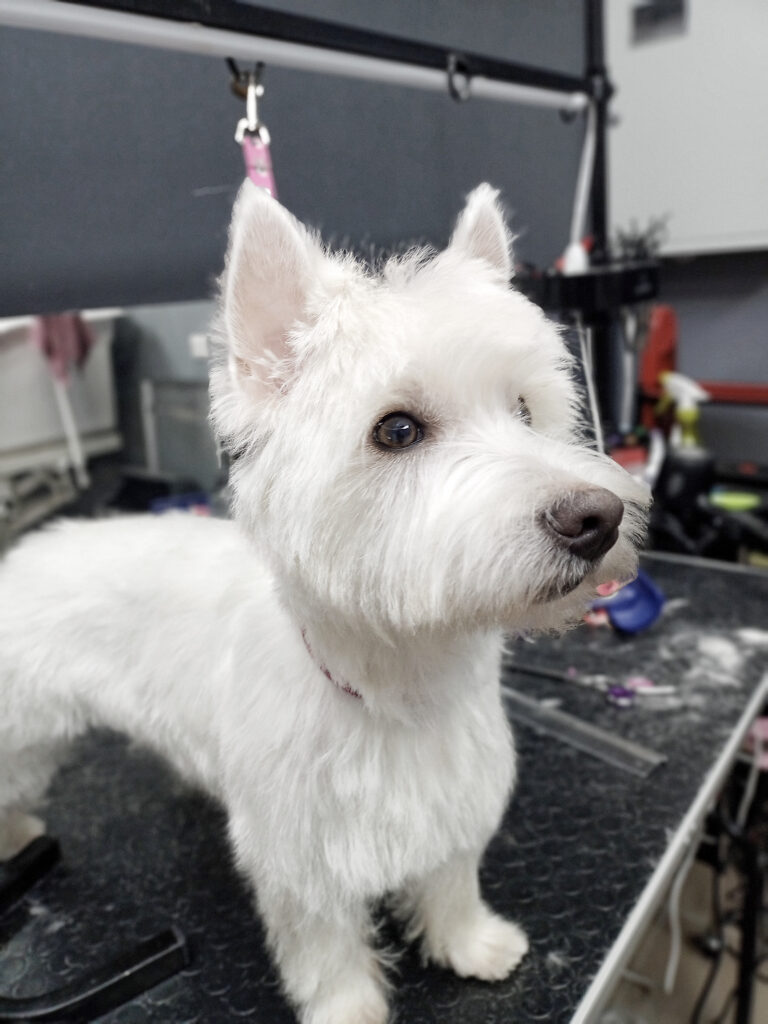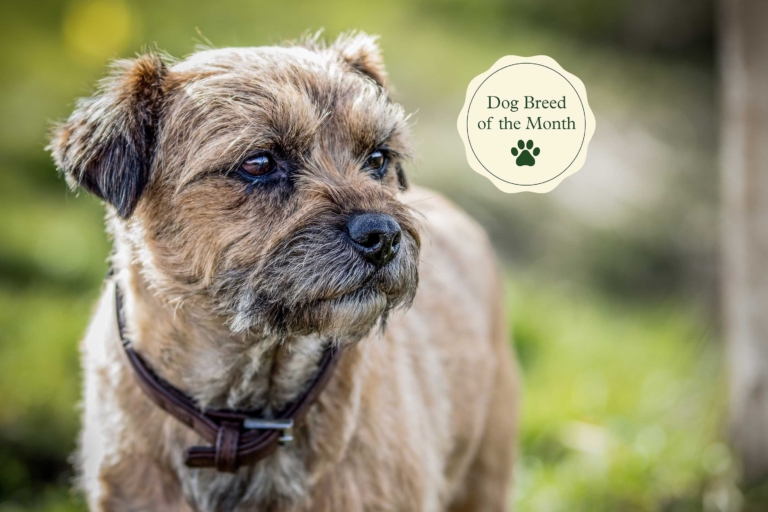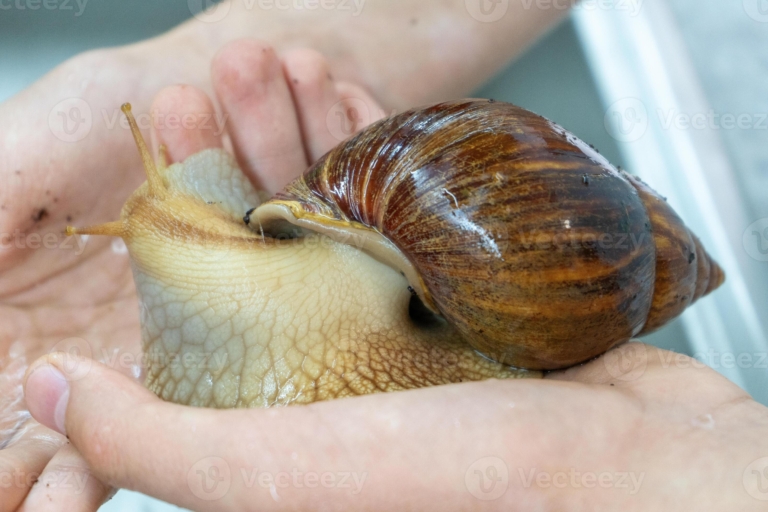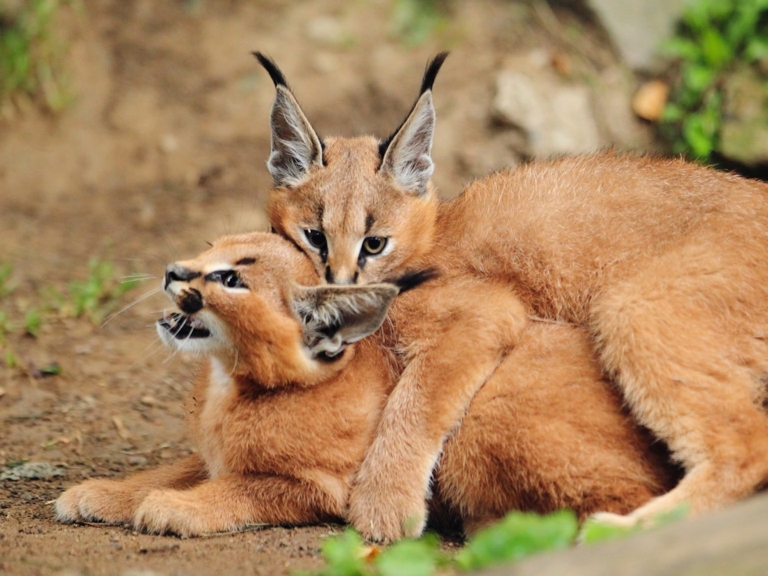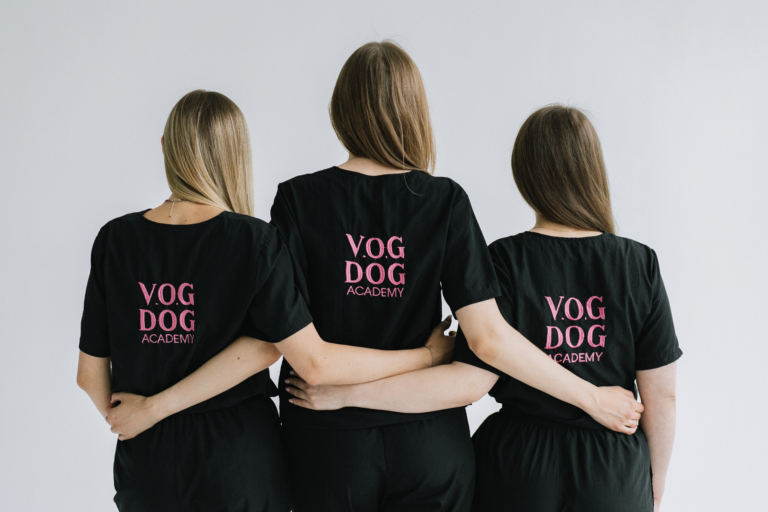Overview of the breed and its unique features
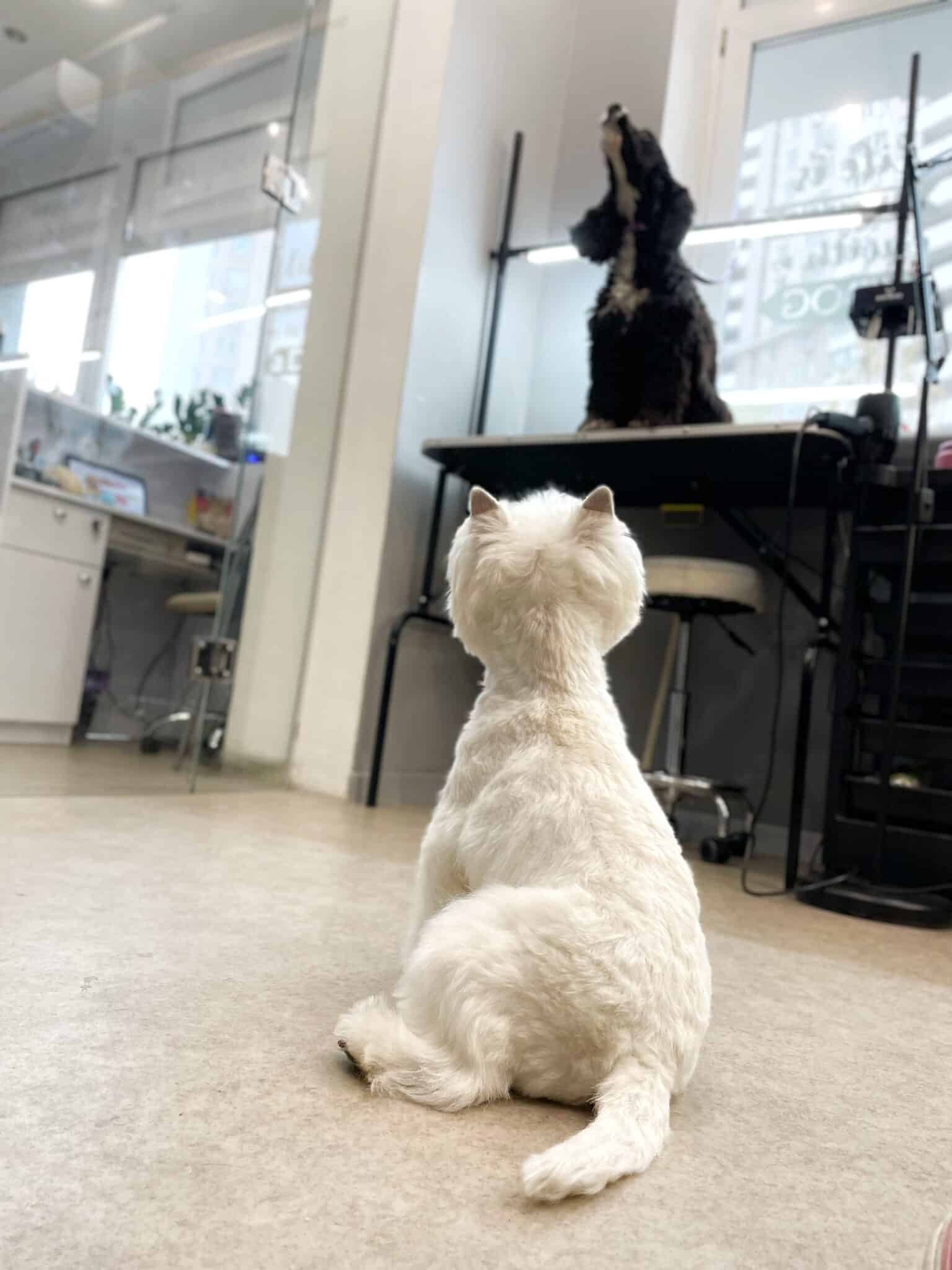

The West Highland White Terrier, also known as the Westie, is one of the most beloved terrier breeds in the world. These small but brave dogs stand out for their bright white coat, energetic character and indomitable spirit. West Terriers are excellent companions, known for their loyalty, friendliness and high level of intelligence. Their love of play and adventure makes them real pets for active families. However, despite their small stature, Whistles require regular exercise and attention to grooming to stay healthy and happy.
Origin of the West Highland White Terrier
West has a long and interesting history that begins in Scotland. The breed was developed from a group of Scottish terriers that were used to hunt rodents and other pests. It is known that in the 19th century, Colonel Malcolm of Poltalloch decided to create a breed with a pure white coat to avoid confusion with game during hunting. This is how the first West Highland White Terriers appeared, which quickly gained popularity as hunting dogs and also as excellent companions.
Breed names
The West Highland White Terrier is known by several names, including “Westie”, “Poltalloch Terrier” and “Rosenith Terrier”, referring to the various places in Scotland where the breed was popular. The modern name “West Highland White Terrier” was officially adopted in the early 20th century, when the breed was recognized by major kennel organizations. Despite the variety of names, they all reflect the unique characteristics and rich history of this charming breed.
How to choose West Highland White Terrier puppies correctly
When choosing a puppy, it is important to pay attention to several aspects that will help you find a healthy and happy baby. First and foremost, always buy puppies from a responsible breeder who can provide all the necessary information about the puppy’s parents, including health certificates and genetic test results.
Look at the behavior of the puppies: a healthy puppy will be active, inquisitive and not showing signs of aggression or excessive timidity. Make sure the puppy’s coat is clean and well-groomed, the eyes are clear and free of discharge, and the ears, nose and mouth are free of signs of infection or disease.
Temperament: Choose a puppy whose temperament matches your lifestyle. Westies are active and playful dogs that need attention and interaction.
Puppy Parents: Getting to know the parents will help you get an idea of your puppy’s future size, temperament, and health.
Food
Proper nutrition is a very important factor in the health and longevity of the West Highland White Terrier. It is recommended to choose a high-quality dry food, specially designed for small breeds of dogs, taking into account their energy needs. Natural foods such as meat, vegetables and grains can also be included in the diet, but it is important to avoid foods that can be harmful to dogs.
The diet should be regular, usually 2-3 times a day for an adult dog and more often for puppies. It is important to monitor your weight, as this breed is prone to obesity, which can lead to various health problems. Always provide access to fresh drinking water. Do not forget about vitamin complexes, especially for dogs that eat inexpensive dry food or natural food.
West Highland White Terrier care
Caring for a vet requires attention to several aspects to ensure their health. Regular visits to the veterinarian for preventive examinations are a must. It is also important to pay attention to your Poodle’s teeth, to clean them regularly to prevent oral diseases.
Exercise is an integral part of caring for West Highland White Terriers. These energetic dogs need daily walks, outdoor play and mental stimulation to stay healthy and happy.
What kind of coat do West Highland White Terriers have and how to care for it
West Highland White Terriers have a thick double coat consisting of a soft undercoat and a stiff topcoat. To keep their coat in good condition, they need to be brushed regularly – about 2-3 times a week – to prevent matting and to remove dead hair.
Bathing Westies is recommended no more than once a month, using shampoo for dogs with stiff coats, so as not to damage their natural oil barrier film. Drying after bathing should be thorough, using a hair dryer at a low temperature.
Trimming West Highland White Terrier
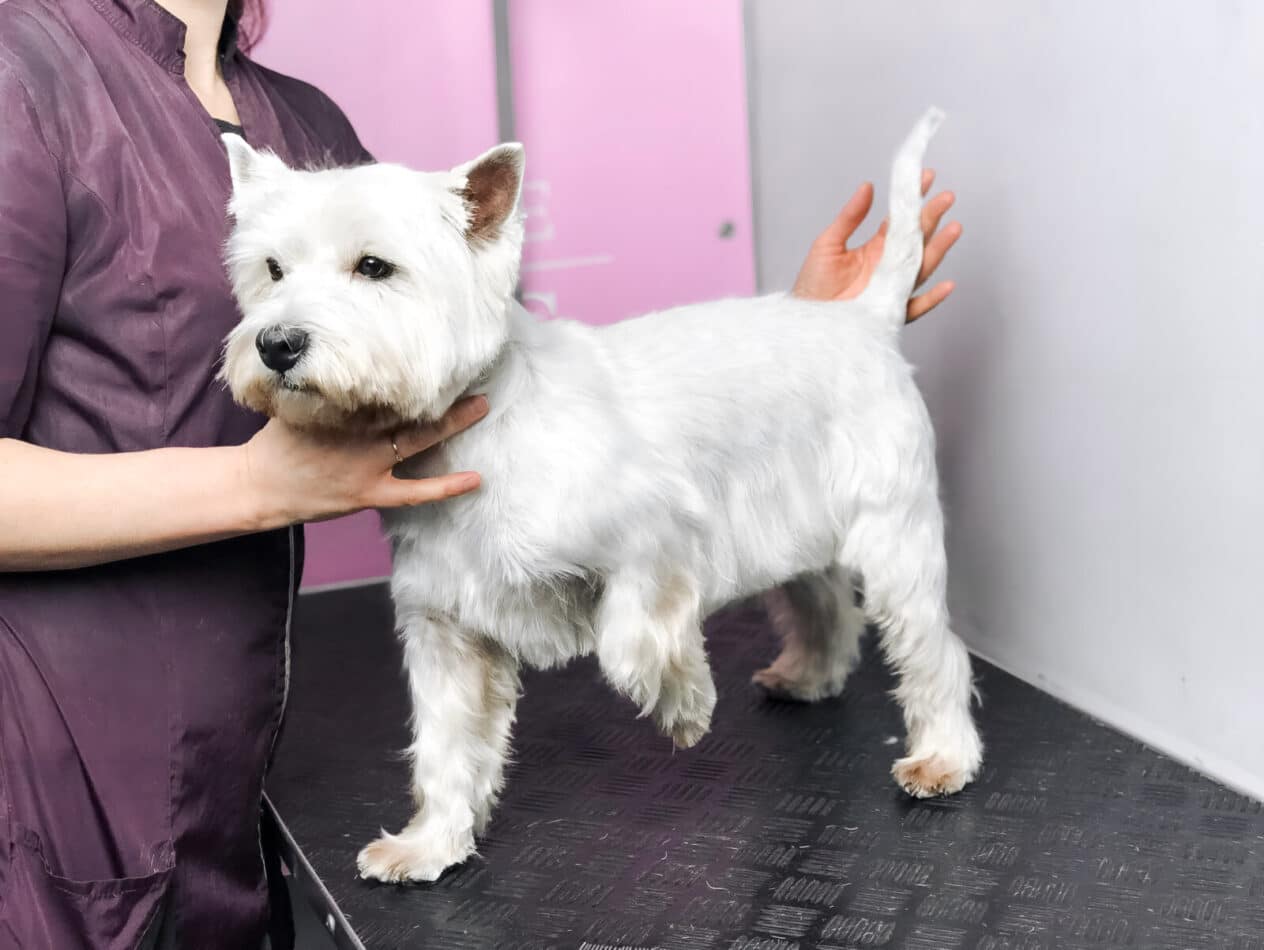
Trimming or stripping improves the appearance of the dog. Westies are known for their dense double coat, consisting of a soft undercoat and a stiff overcoat. This unique coat requires regular and proper trimming to avoid tangling, reduce shedding and keep the skin healthy.
The importance of trimming
Regular trimming keeps the coat clean and reduces the risk of developing skin diseases. Removing the dead undercoat promotes better air circulation to the skin. Trimming the fur around the eyes, ears and paws makes the dog more comfortable and prevents the accumulation of dirt and bacteria. It also allows you to emphasize the natural beauty of the breed, while maintaining the characteristic appearance of the West Highland White Terrier.
Trimming process
Grooming a West Highland White Terrier can include clipping, plucking (placking) and brushing. Plucking is the process of removing dead overlock by hand or with special tools, which promotes the growth of new, healthy hair. Clipping or clipping is used to shape the coat around the paws, head and body, providing a neat appearance.
Recommendations from our masters
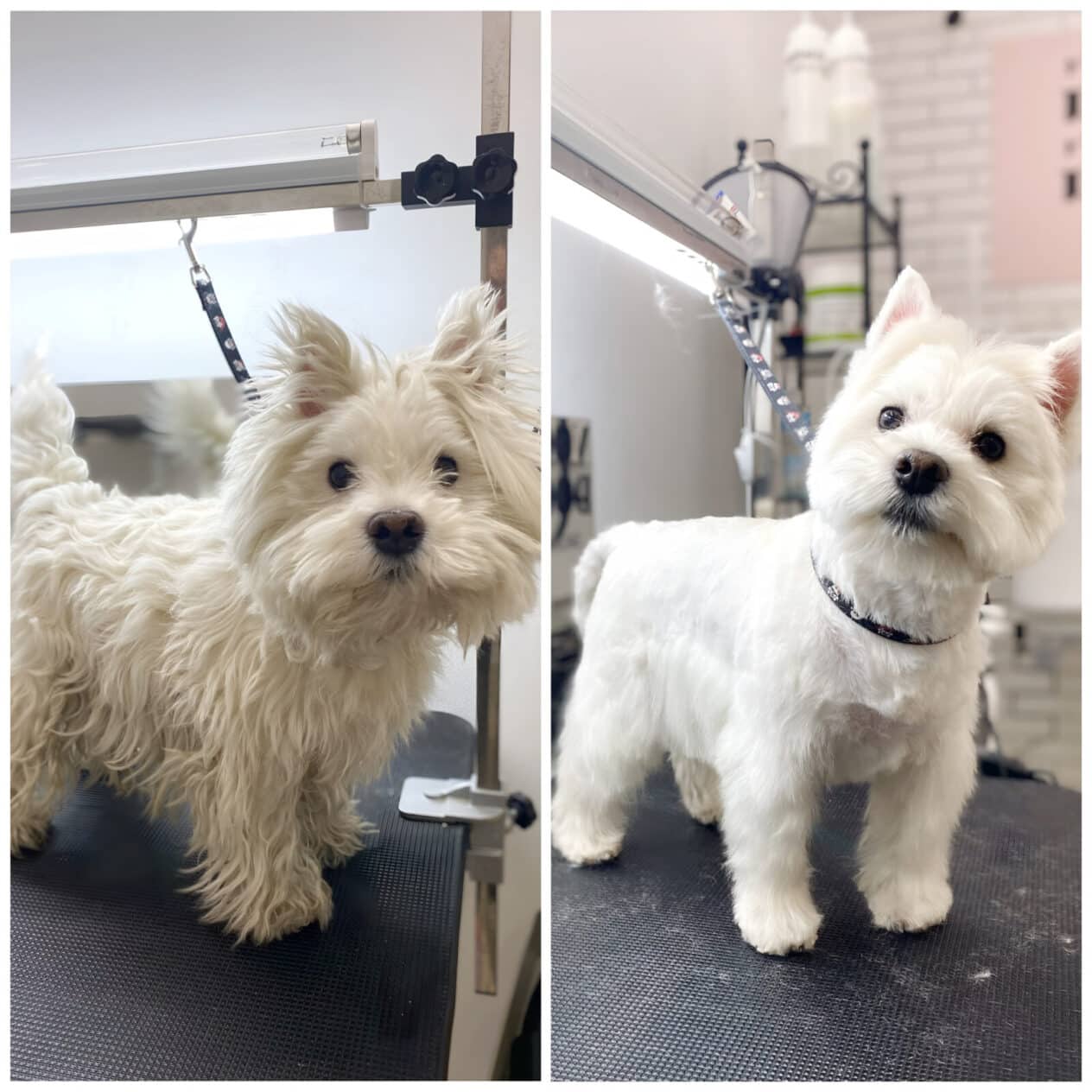
Frequency: Trimming is recommended every 2 months and 4-6 weeks for show dogs, depending on the rate of coat growth and the dog’s individual needs.
Professional Groomer: For best results, it is recommended to use an experienced groomer who specializes in trimming West Highland White Terriers.
Grooming at Home: Between professional trimming sessions, it is important to regularly brush the coat of the Westies to prevent matting and keep the coat in good condition.
Grooming West Highland White Terrier
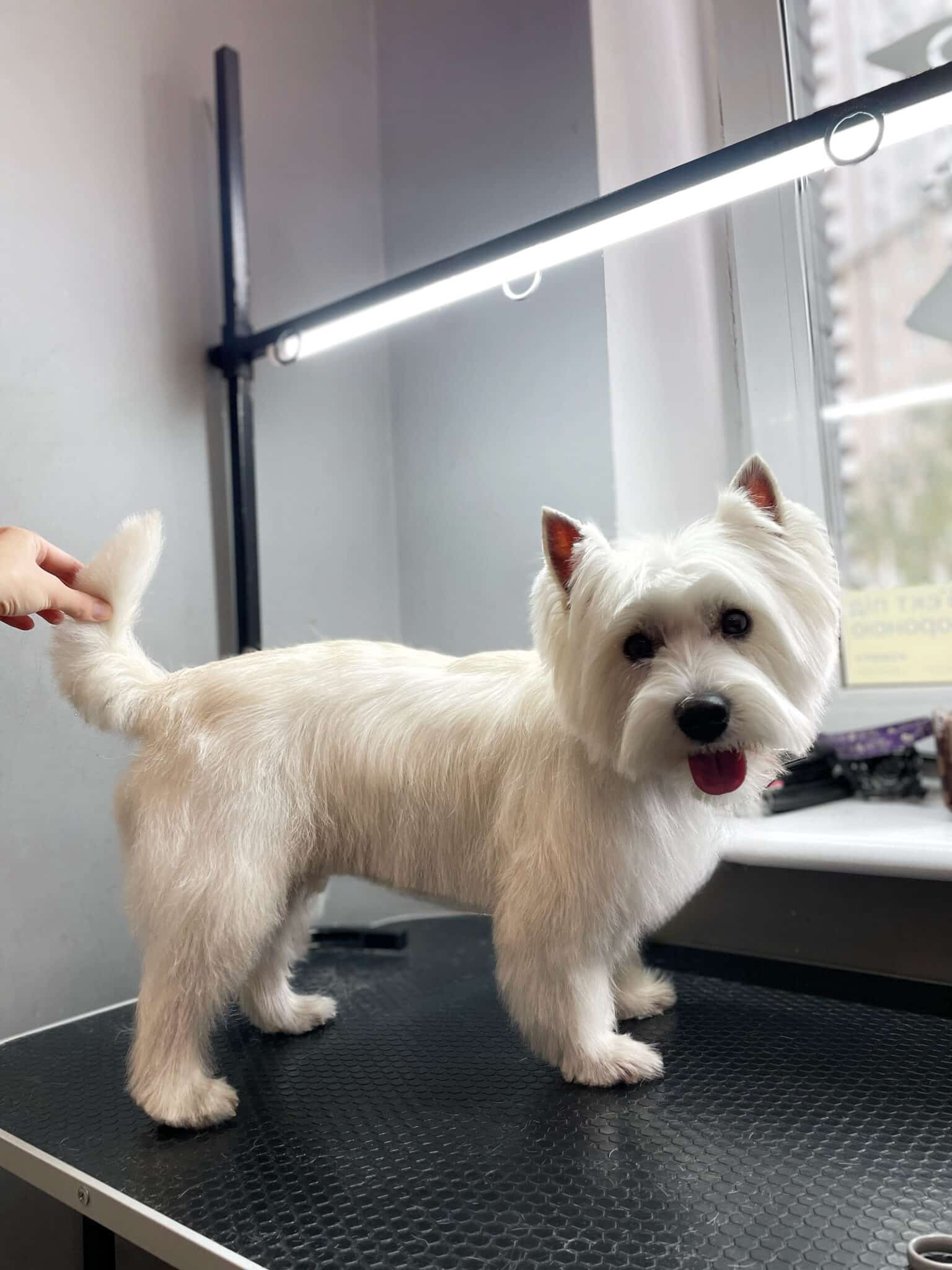
Vest grooming is a comprehensive procedure that includes care for the dog’s coat, skin, claws, ears and eyes. The process begins with a thorough combing of the coat to remove dead hairs and prevent the formation of mange. This is followed by a bathing with a specialized white coat shampoo that helps keep the coat bright and clean. After bathing, the wool is carefully dried with a hair dryer, avoiding overheating and skin irritation.
Sequence of grooming in salons V.O.G DOG Kyiv
Claw trimming: an important procedure that prevents discomfort and problems with walking.
Bathing: Using specialized premium shampoos to maintain the snow white coat.
Combing: removal of dead hairs and prevention of ingrown hairs.
Eye and Ear Care: Cleaning to prevent infections.
Plucking the hair from the ears: improves ventilation and reduces the risk of infections.
Haircut and trimming: formation of a hairstyle taking into account the standards of the breed and the individual characteristics of the dog.
Features of vest hairstyles
Popular hairstyles for West Highland White Terriers include the “puppy” cut, where the fur on the face and paws is left longer for a cute look, and the more traditional cut, which emphasizes the Wests’ athletic silhouette and active nature. The choice of hairstyle depends on the owner’s preferences and the dog’s lifestyle.
The first trimming: when and how
The first trimming of a West Highland White Terrier is usually done at the age of 3 to 6 months. This helps the baby get used to the procedures from an early age. The first experience should be positive, so it is important to choose an experienced groomer who knows how to properly handle young dogs.
The procedure is not painful, but can cause stress in a young dog. Using treats and praise will help make the process more enjoyable.
When to trim and when to cut vests
It is important to understand when you need to trim and when to cut your dog. Trimming, or plucking, is recommended to maintain the health of the coat and skin, especially in the warm season, to ensure better ventilation. Clipping with a clipper or scissors can be used to shape the hairstyle, but it is important not to over-cut the coat so as not to damage the natural protective layer. The choice between trimming and cutting depends on the condition of the dog’s coat and the advice of a professional groomer.
Care after trimming
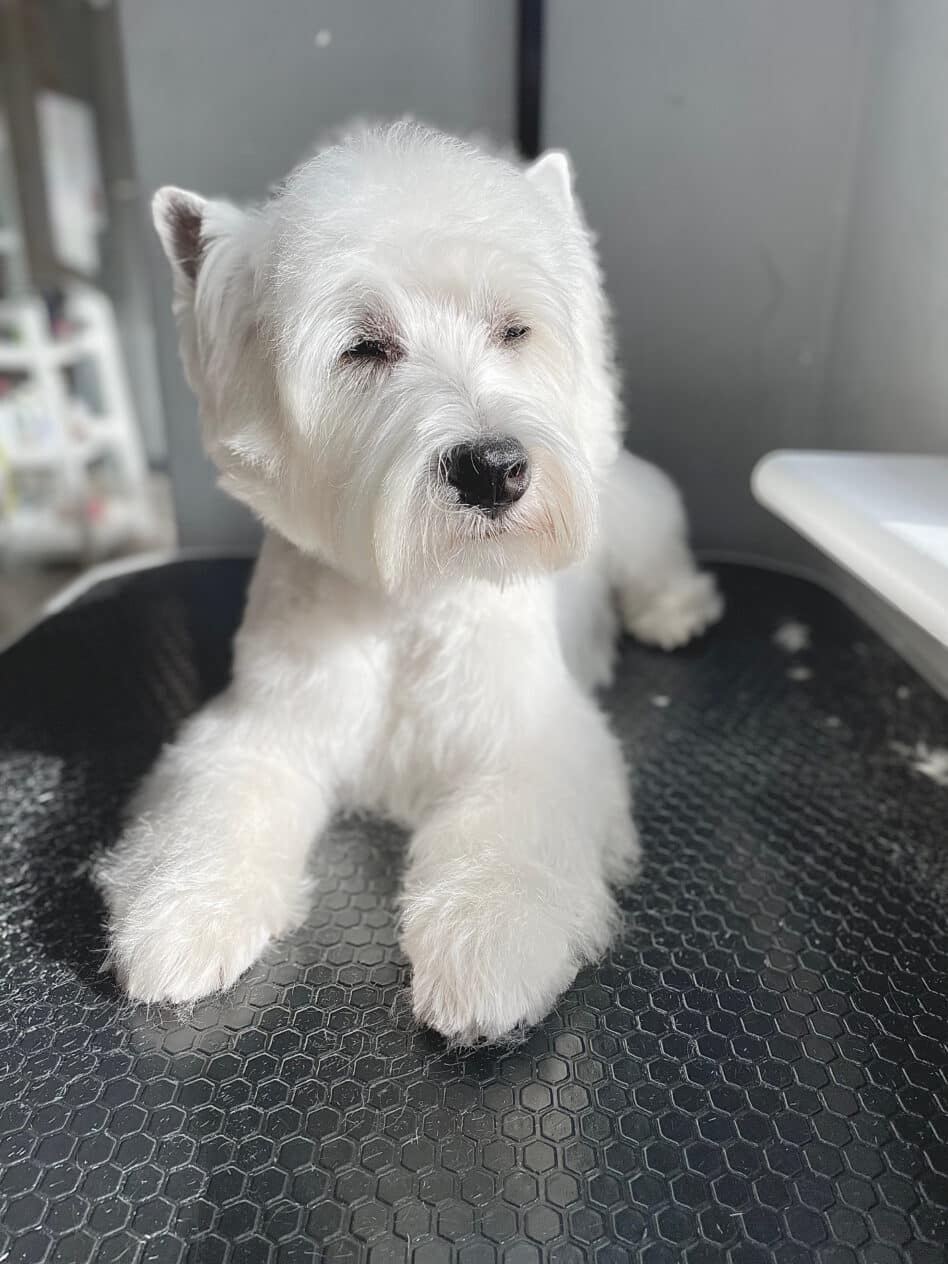
After the trimming procedure, it is important to ensure that your West Highland White Terrier is properly cared for in order to maintain its health. Here are some recommendations to help your pet stay comfortable and well after a visit to the groomer:
Keep the coat dry and clean: After trimming, the dog’s skin can be a little sensitive. Avoid bathing your vest for a few days after trimming to give the skin a chance to recover.
Regular brushing: To prevent mats and keep the coat in good condition, brush your dog regularly, especially in areas where the coat is prone to tangles.
Provide a comfortable place to rest: after a visit to the groomer, your vet may feel an increased need for peace and rest. Make sure that your dog has a cozy place where he can rest comfortably.
Attention to behavior: monitor the behavior of your West Highland White Terrier after trimming. If the dog shows signs of discomfort or stress, give it extra attention and support.
We invite you to visit our chain of V.O.G DOG pet stores in Kyiv, where we offer professional grooming and trimming services for West Highland White Terriers. Our experienced groomers use the best tools and techniques to keep your Pet looking great, feeling comfortable, and most importantly, stress-free. When you visit V.O.G DOG, you can be sure that your dog will receive the best care and attention he deserves.

